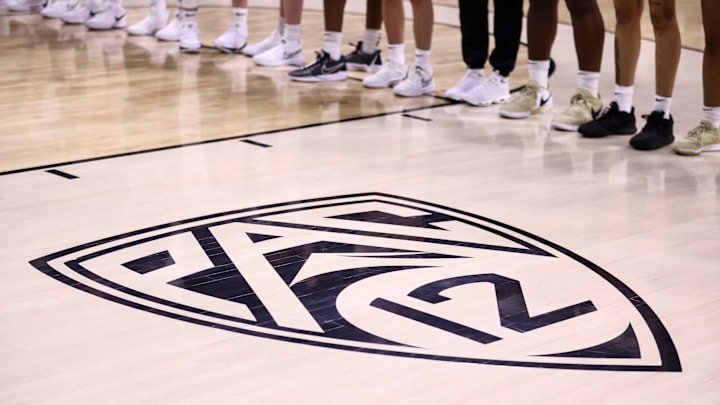The Pac-12 has risen from the ashes. After the conference was deemed non-existent, unimportant and inconsequential, a light appeared at the end of the tunnel.
On Thursday, Sept. 12, the Pac-12 announced that it had added four new schools to its roster: Boise State, Colorado State, Fresno State, and San Diego State.
While the main appeal from all four athletic departments may be their highly touted football programs, the real winners of the conference (re)expansion aren’t from men’s sports at all. Interest in women’s collegiate athletics (and women’s sports in general) has increased at a meteoric pace over the past half-decade.
According to Deloitte, elite women’s sports will bring in more than $1 billion in 2024. On the collegiate level, the popularity and audience growth includes, or may even be highlighted by, the Pac-12.
Over the past few decades, Stanford women’s basketball, Oregon track and field, and UCLA gymnastics have made national names for themselves. And while those top-tier programs may have abandoned (what they thought was a sinking) ship, the newest members of the conference have the opportunity of a lifetime to boost their own popularity through media valuation, added competiton, NIL deals and more.
New Pac-12 members with much to gain
The Boise State Broncos have an incredible women’s soccer team. The Colorado State Rams women’s basketball program has an established reputation. The Fresno State women’s athletic department is always of note, whether that be for tennis or soccer. And the San Diego State Aztecs dominate the women’s lacrosse field and have their share of wins across the board.
Boise State women’s national championships
Team/Athlete | Sport | Year |
|---|---|---|
Eleni Kafourou | Track and Field | 2009 |
Emma Bates | Track and Field | 2014 |
Allie Ostrander | Track and Field | 2017, 2018 |
Fresno State women’s national championships
Team/Athlete | Sport | Year |
|---|---|---|
Women's softball | Softball | 1998 |
Melissa Price | Indoor Track and Field | 1997, 1998 |
San Diego State women’s national championships
Team/Athlete | Sport | Year |
|---|---|---|
Ramona Pagel | Track and Field | 1984 |
Laura De Snoo | Track and Field | 1985 |
LaTanya Sheffield | Track and Field | 1985 |
Whitney Ashley | Track and Field | 2012 |
Shenieka Ricketts | Track and Field | 2013, 2014 |
Sure, it’s a big step up for the former Group of Five football programs. And the men’s basketball programs will get a few more nods of approval as well. However, the difference between Power Four and G5 sports for women’s intercollegiate athletics is astonishing.
Oregon State gymnast Jade Carrey is ranked No. 10 in the country for overall NIL value. Former Pac-12 stars like USC’s JuJu Watkins and Arizona’s Jada Williams made their presence known on a national level because of the spotlight that the conference gives to women’s basketball.
New Pac-12 athletes who could cash in big
- Mary Kay Naro, basketball, Boise State
- Kennedy Bunker, softball, Fresno State
- Hannah Ronsiek, basketball, Colorado State
- Denise Castro, soccer, San Diego State
- Boise State gymnastics
- San Diego State lacrosse
As these athletic programs have grown, their teams and their individual athletes have received increased recognition over the years. The status change from being grouped into the Group of Five to being more closely tied to the Power Four conferences will only continue the upward trajectory for all four programs and their stars.
The list of female athletes who could potentially receive a big paycheck for their new status as Pac-12 student-athletes is just the beginning. The hope is that these young stars could see dividends from the transition. Not only is this a win for the four athletic departments as a whole, but it’s also a win for every single women’s sports program at all four schools.
